How to Make a Perfect Omelet
on Feb 14, 2024
This post may contain affiliate links. Please read our disclosure policy.
Filling, folding, timing — everything you need to know to turn out beautifully cooked omelets every time.
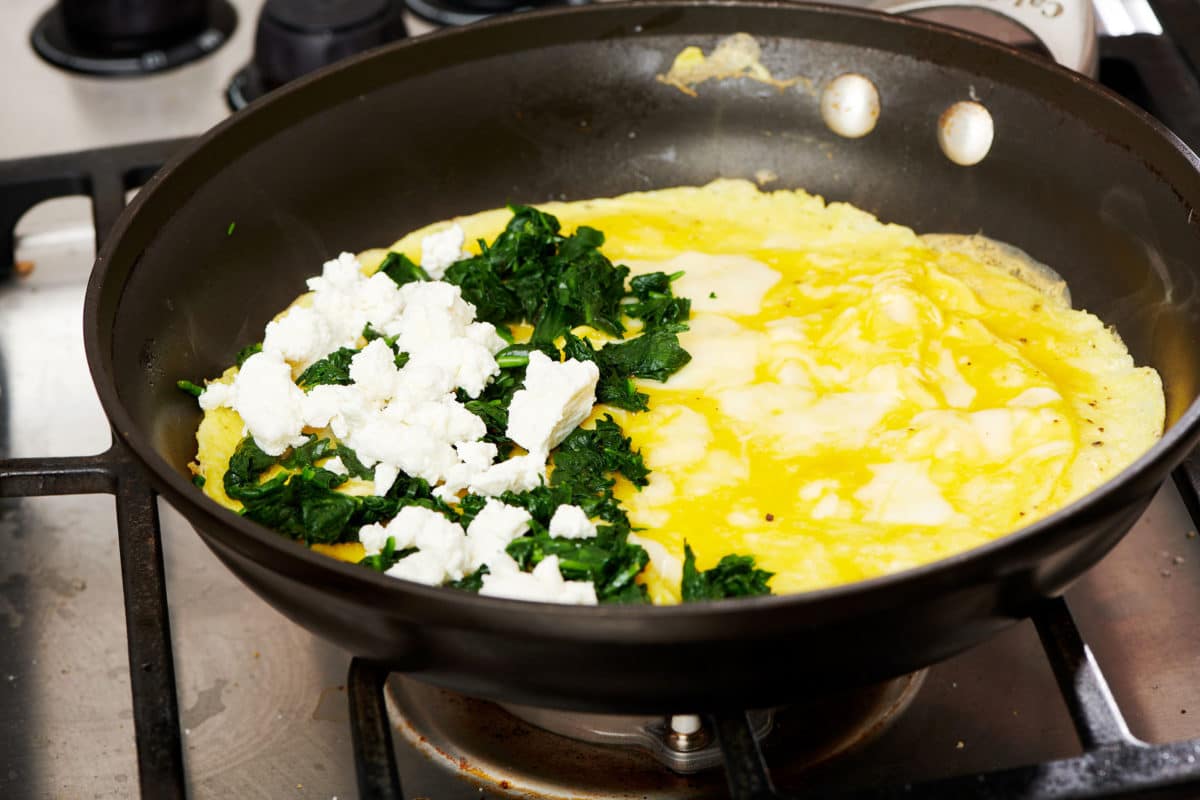
If you’ve ever been to a nice breakfast buffet, you may have stood before a toque-d chef wielding a shallow pan, a ladle, and a bowl full of beaten eggs, producing perfect omelet (or omelette; same dish, different spellings) after perfect omelet. While you nibble your bacon (perhaps that’s just me), you marvel at the ease with which he uses his spatula, the way she knows just how much filling to put in, the way they flip or roll it up at the end, the cheese and vegetables completely encased in perfectly cooked fluffy eggs.
All of this omelet magic is yours for the learning. Omelets make a great breakfast, sure, but also a fabulous lunch or a delightful light dinner paired with a tousle of vinaigrette-coated greens and some crispy stovetop potatoes.
Table of Contents
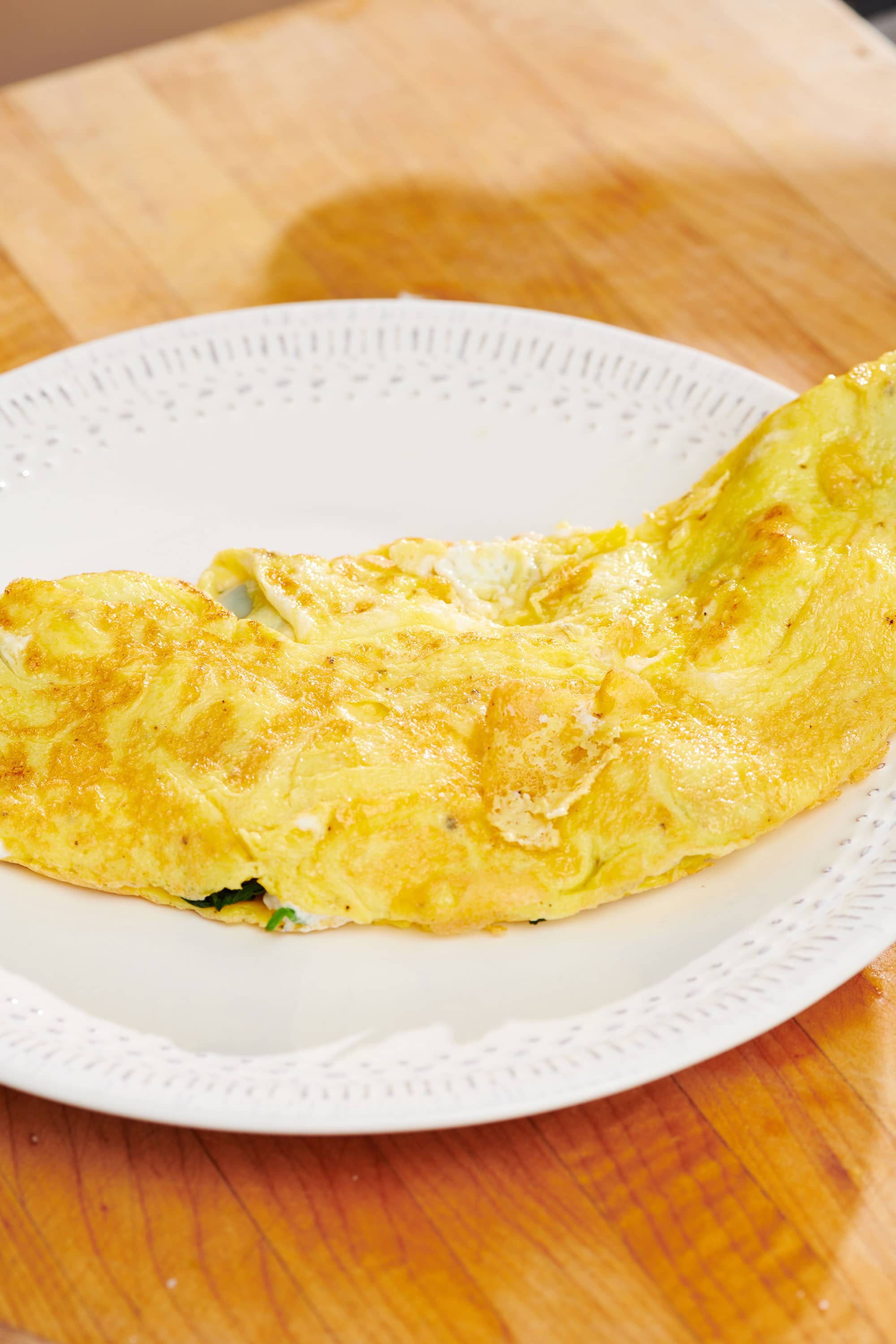
How to Make a Perfect Omelet: The filling, the folding, the cooking – everything you need to know to turn out beautiful omelets every time.
Tweet This
A Variety of Omelets
Filling an omelet is actually optional, though most of us think of omelets with something in the middle. An omelet can be rolled or folded, and technically, it can also be flat. This preparation is more commonly known as a tortilla in Spain and Mexico or a frittata in Italy, with the “fillings” mixed right into the eggs.
If you need fillings inspiration, consider checking out the Denver Omelet, which is made with peppers, onions, ham, and cheese, a modern Kale Pesto Goat Cheese Omelet, or the classic Spinach Feta Omelet.
The Best Pan for Making an Omelet
In The Way to Cook, Julia Child discusses the perfect omelet pan in affectionate detail, explaining that in a perfect world, a thin iron pan with a 10-inch top diameter, a 7 ½-inch bottom diameter, and a 2-inch depth is what was traditionally used in French cooking. If you have access to that exact pan, lucky you!
If not, you will be looking for an 8-inch omelet pan, preferably nonstick, or a similar shallow 8-inch shallow skillet. And if you don’t have a nonstick pan, try giving the pan a nice spritz of nonstick cooking spray before heating the pan.
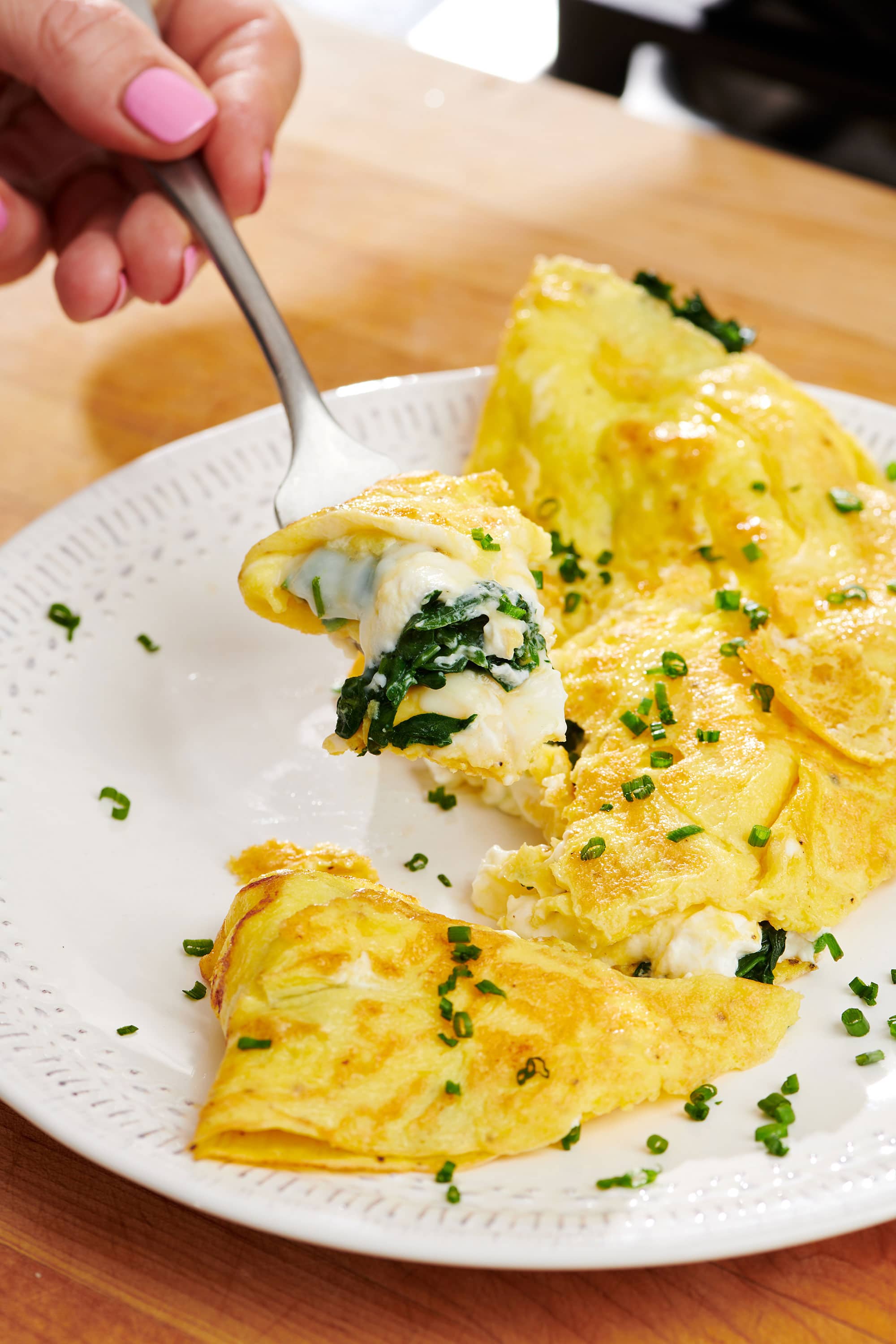
Ingredients
- Eggs – A typical omelet is made with two or three large eggs. If you have a 7-inch pan, use two eggs; if you have a 9-inch pan, use three. If you have an 8-inch, you choose depending on how thick or thin you like your omelets. More than three eggs can be hard to manage in the pan and also make a pretty big omelet.
- Salt and pepper – To taste.
- Butter – Butter is essential in this recipe, providing that classic French flavor. Don’t skimp on the quantity for the best flavor and to prevent sticking.
- Filling – Fillings can range from vegetables to ham, ratatouille, bacon, sausage or other meats, smoked fish, cheeses, or even jam. Personally, I love using sautéed mushrooms, spinach, chopped tomatoes, roasted red pepper, cheese, sausage, bacon, and smoked salmon, individually or in delicious combinations. You’ll want to have your fillings ready to go before you start cooking the eggs because the cooking process is very quick.
- Fresh herbs – An optional garnish at the end, very classic.
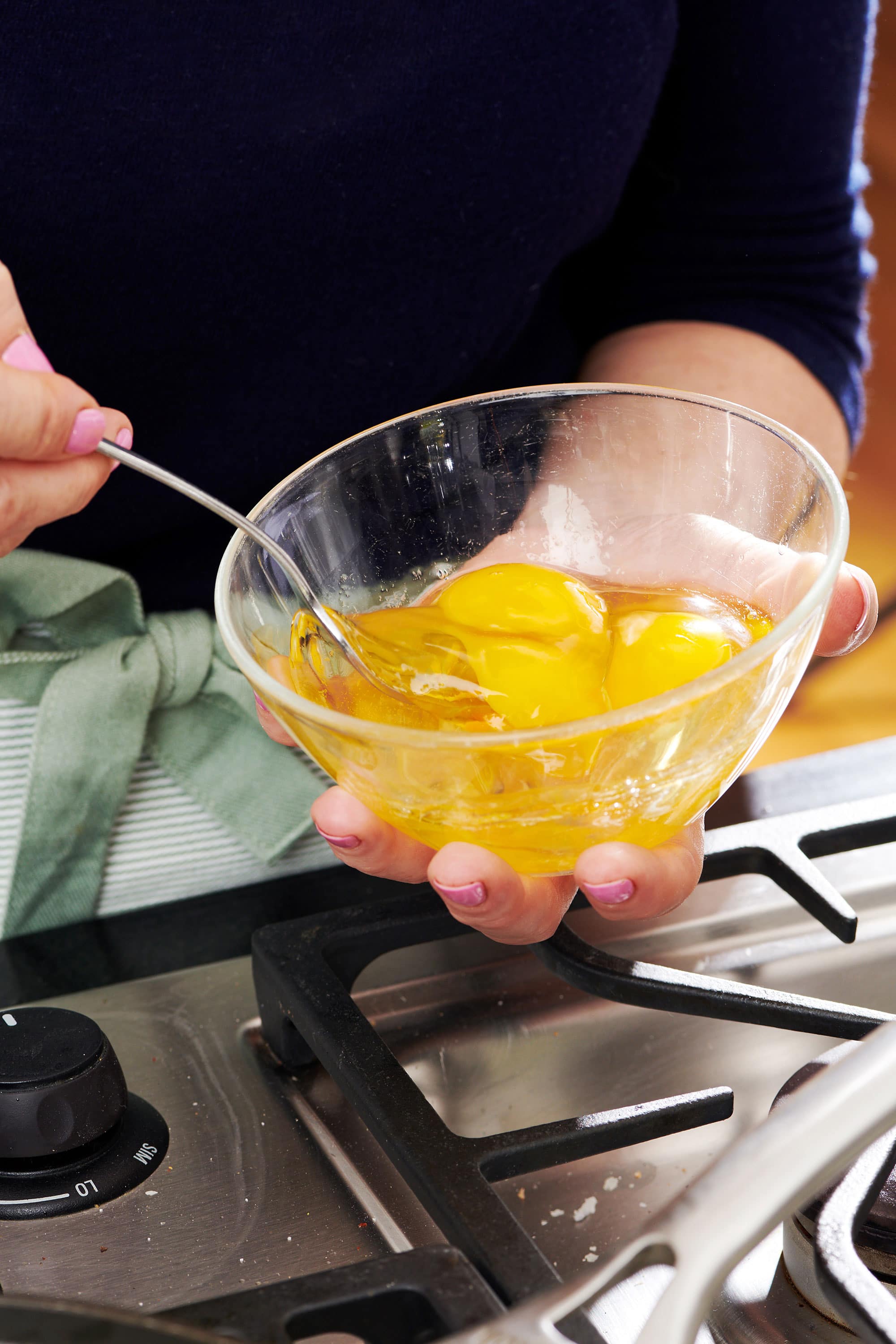
Variations and Substitutions
- You should also feel free to whisk a tablespoon of fresh minced herbs into the eggs before they go into the pan — parsley, chives, tarragon, and chervil are some classic choices, alone or in combination.
- You can add a little hot sauce to the eggs or just season the omelet with hot sauce if you like.
How to Make the Perfect Omelet
- Prepare the eggs and pan. Crack the eggs into a small bowl, add salt and pepper, then beat w with a fork. Melt butter in a pan over medium-high heat.
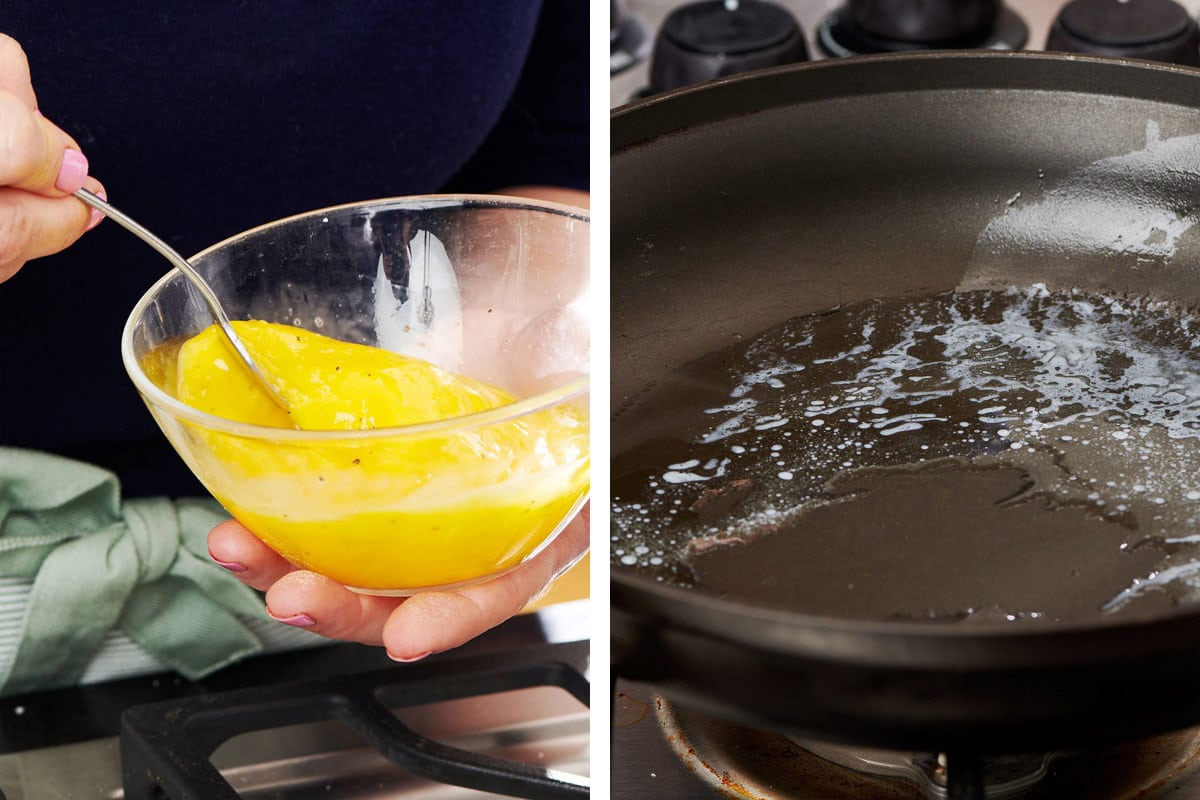
- Pour in eggs: Pour the eggs into the hot pan and quickly shake and swirl the pan so that the eggs cover the entire bottom of the pan. Let the eggs start to firm up on the bottom for about 30 seconds. Then, use a rubber spatula to lift the edges of the omelet up so that any uncooked egg on the top runs underneath.
- Repeat: Repeat this process until there is no more liquid egg that will run underneath. The top should not be too runny but also not be at all dry. How long you cook the omelet is up to personal preference. Just know that once you add the filling and fold it up, the center will continue to cook a bit more.
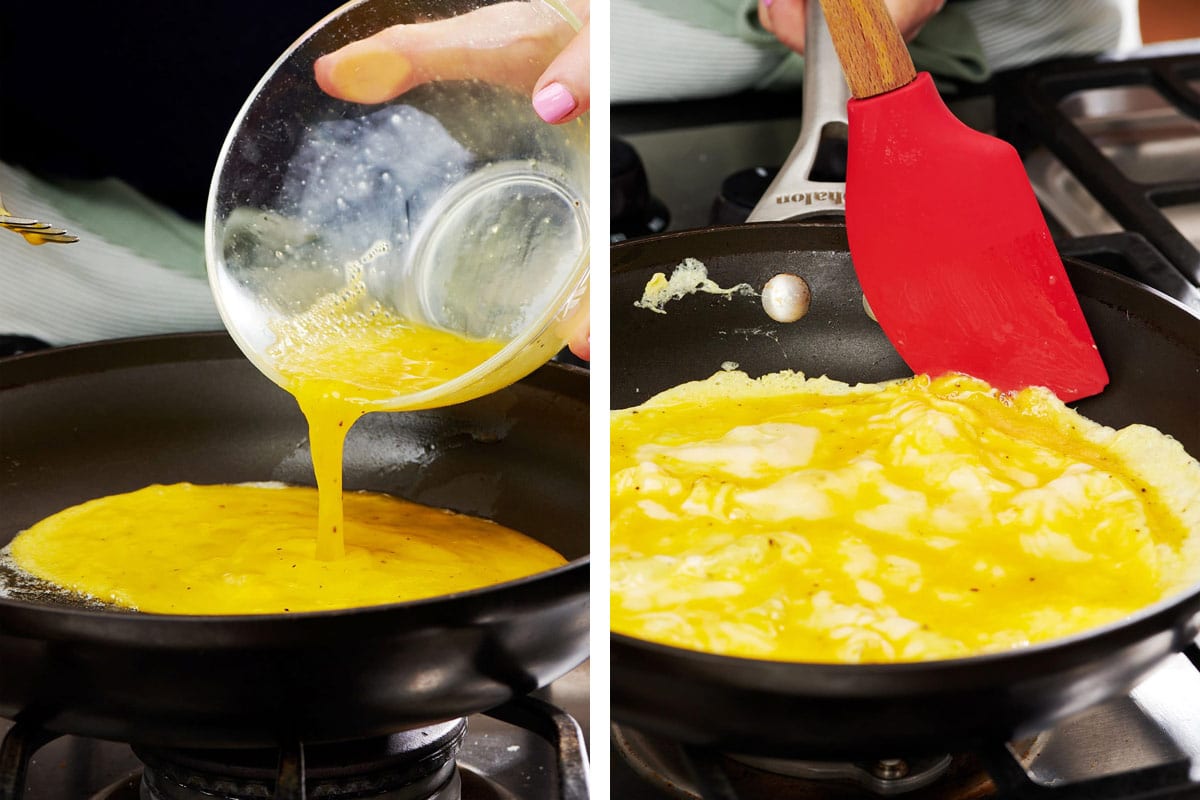
- Add filling: When the eggs have set on the bottom, sprinkle half of the eggs with whatever filling you choose, or put it in a swath down the middle. Cook for another 15 to 30 seconds, allowing the omelet to finish cooking through. Adjust the heat as needed.
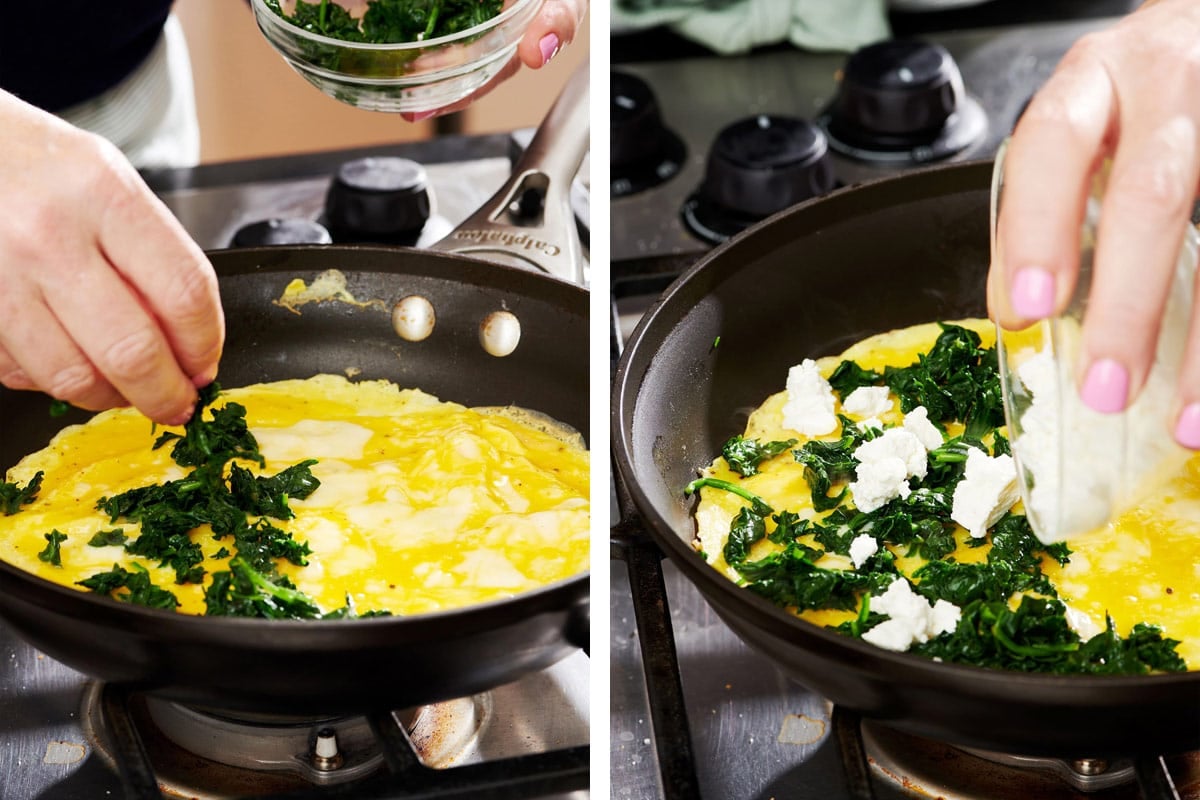
- Fold and serve: Fold the omelet over the fillings. (More details on folding methods below.) To serve, you can sprinkle some fresh herbs over the eggs, and if you’re really feeling fancy, give the top a light brush with melted butter to give it a bit of shine. Whatever you do, serve it hot.
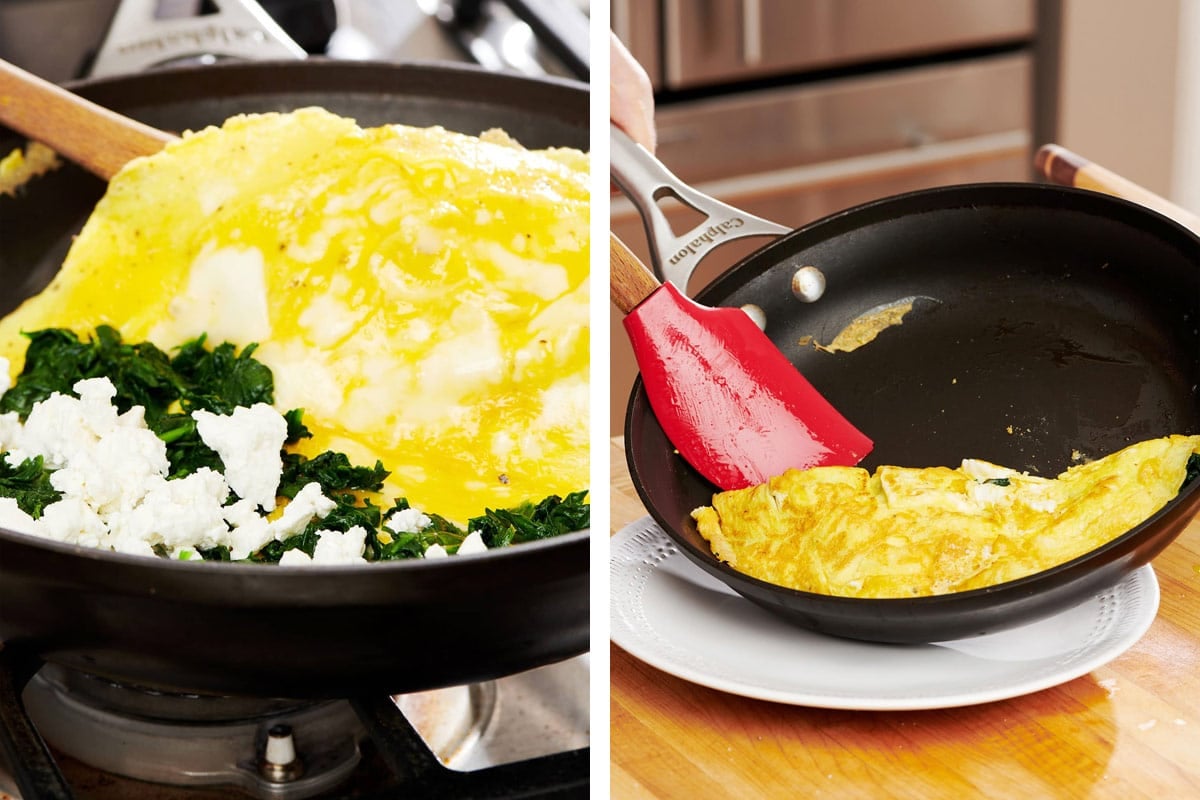
Pro Cooking Tips
- Heat the burner to medium/medium-high. This allows the eggs to cook through and turn slightly golden on the outside but prevents the bottom from getting too brown before the top/middle gets cooked.
- Heat the pan first, then add the butter, let it melt, and swirl the pan so that it coats the bottom evenly.
- You can use a whisk or a fork to beat the eggs, but you don’t want to overbeat them. Just stir until they are blended.
- If you know you will be making more than one omelet, you can whisk up all of the eggs at once and then ladle them out in ½ cup portions (which is equal to about 2 ½ large eggs) to make each omelet.
- For a folded omelet, you’ll want about 3 to 6 tablespoons of filling, and the filling should be crumbled or chopped into very small pieces so that the eggs will easily fold over it. Cooked fillings should be warm since they won’t have time to heat up in the omelet itself.
How to Fold an Omelet
There are a couple of choices here. The simplest is to use a spatula to fold the un-filled side of the eggs over the side with the filling and leave the omelet in a half-moon shape.
Another option is to put the filling down the middle of the omelet. Fold the two sides over the middle, so you have a more rectangular shape.
A little bit more dexterity will allow you to use a fork or a spatula to roll the omelet up. Start from the side with the filling, and roll it towards the plain egg side.
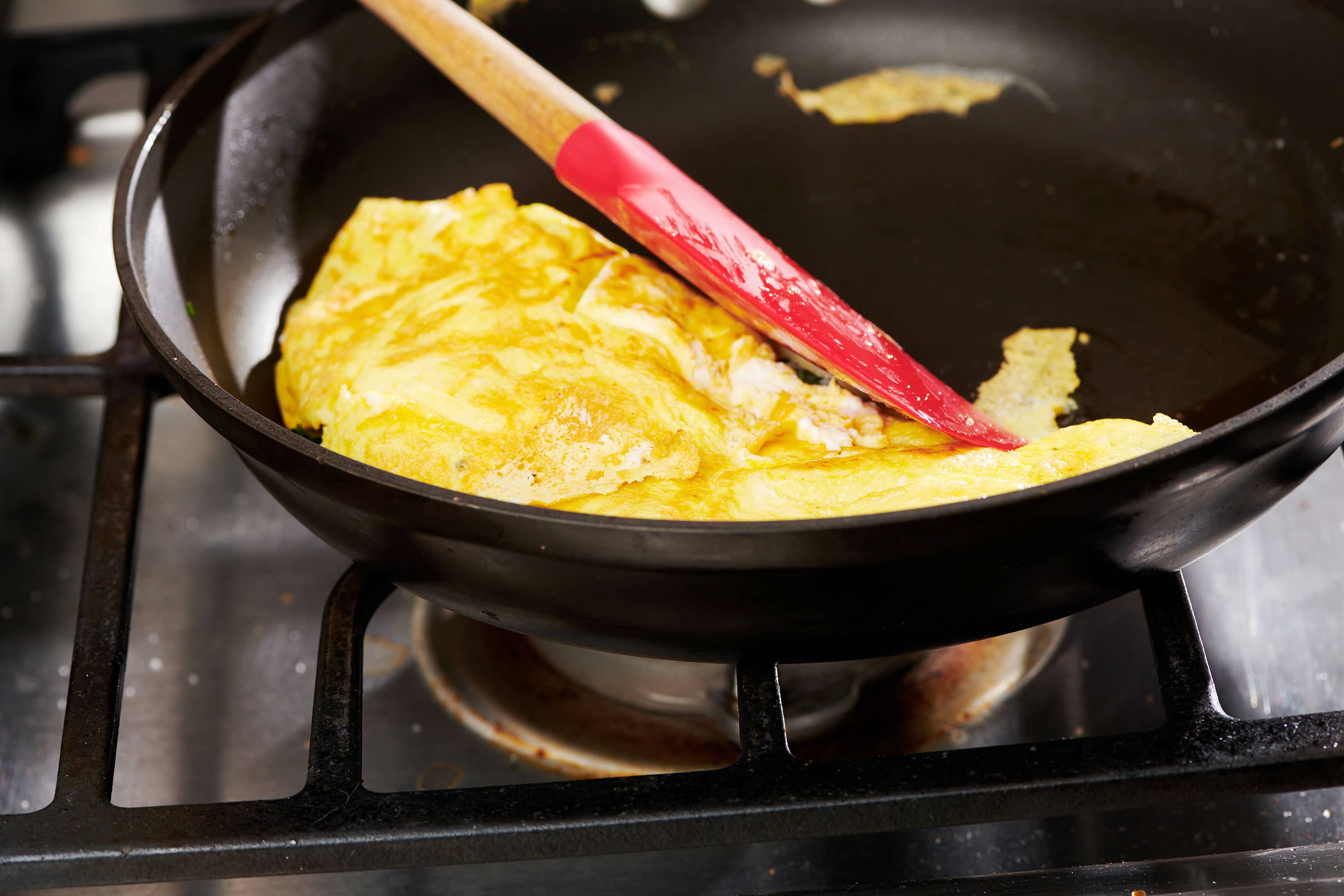
Folding an Omelet with a Snap of the Wrist
If you are feeling more ambitious, you can fold the omelet without a utensil. It’s a sure way to impress anyone who’s watching.
To do this, start by holding the handle of the pan in one hand. Using your other hand in a fist, quickly rap the handle at the edge of the pan so that the edge of the eggs flips over the filling.
Some agile cooks are able to achieve the same results by swiftly jerking the pan away and towards themselves so that the eggs roll up over the filling. This will take some practice and should be first tried in privacy — or with someone who loves you unconditionally.
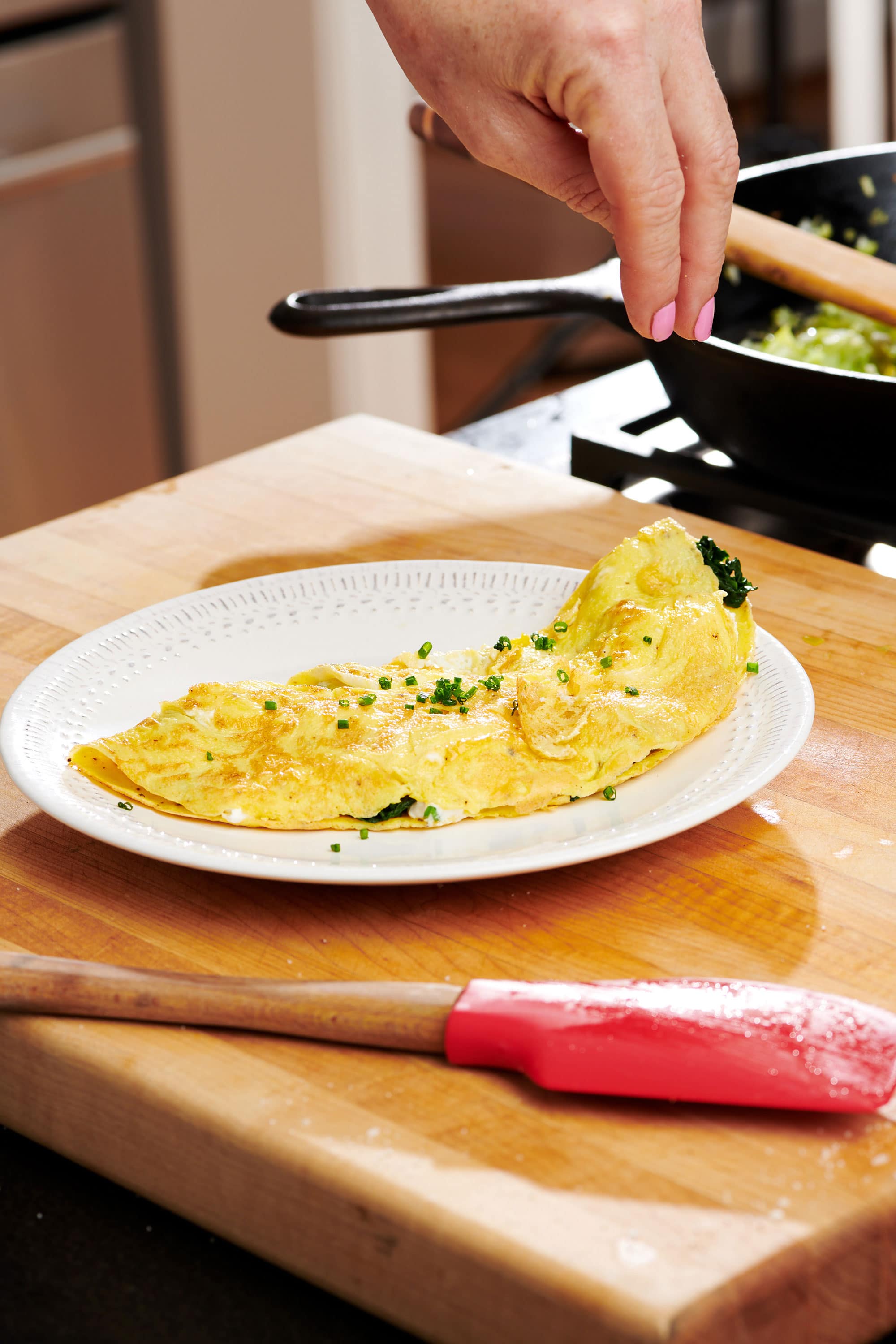
FAQs
Which spelling is correct? Trick question — the answer is both. Omelet is often how is it spelled in the U.S., while omelette is the French spelling, usually used in the U.K. as well. You can pick whichever pleases you!
An omelet maker is a newfangled device that purports to render omelet-making a hands-off activity. These devices can definitely help make omelet-making less intensive for the chef. However, the lucky news is that you definitely don’t need to invest in a special device in order to make a successful omelet. All you need is a small pan and a bit of practice to master this skill. Skip the omelet maker and trust yourself.
What to Serve With Omelets
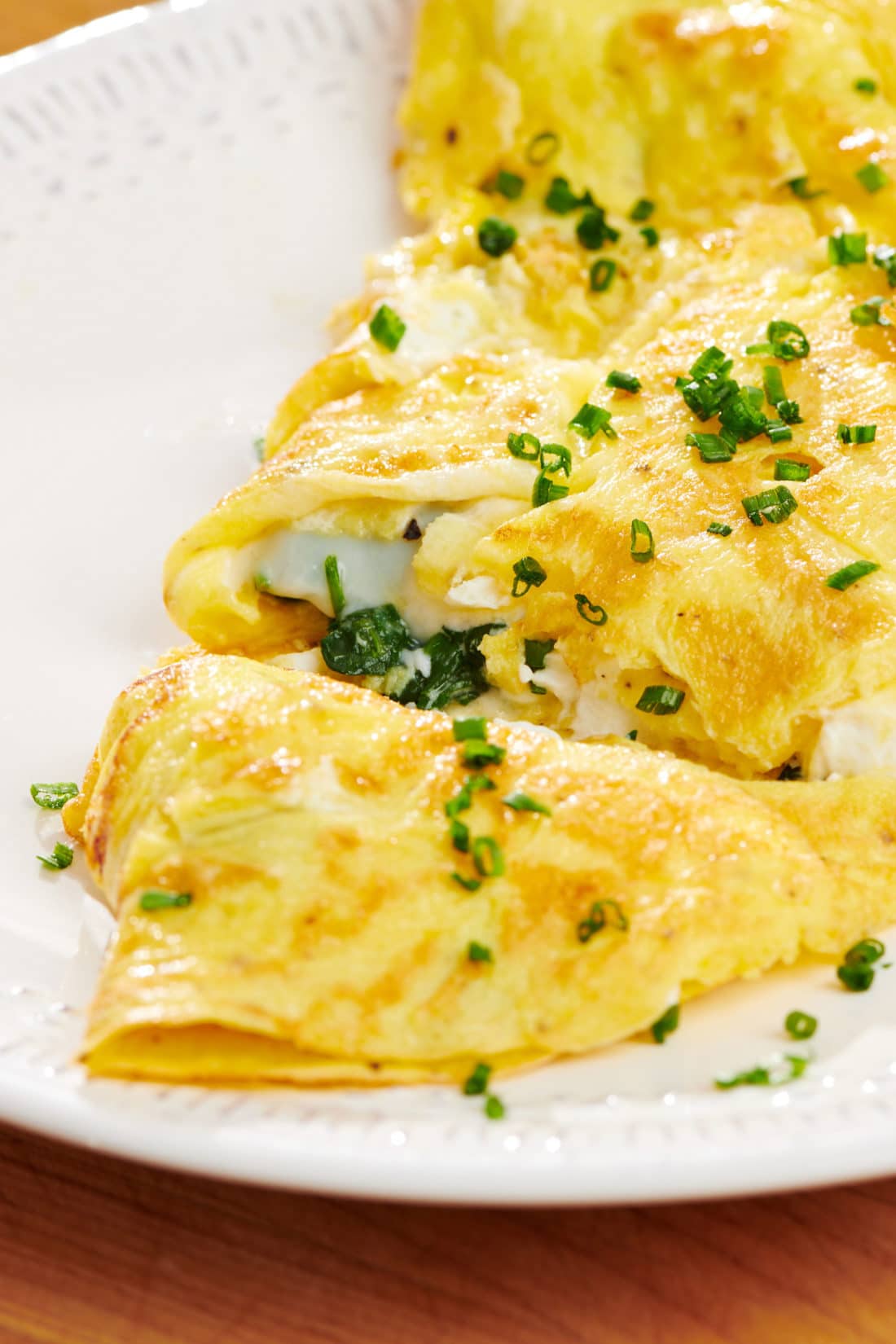
More Egg Recipes
- The Classic Bacon, Egg, and Cheese Sandwich
- Fried Eggs and Smoked Salmon over Polenta Cakes
- Open Faced Flatbread Breakfast Sandwiches
- Fried Egg and Cheese Tostadas
- Denver Omelet
Pin this now to find it later
Pin It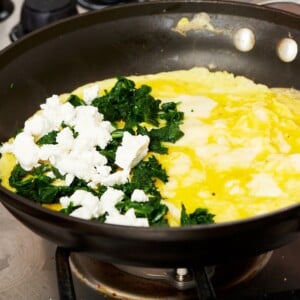
How to Make A Perfect Omelet
Ingredients
- 2 to 3 large eggs
- Kosher salt and freshly ground pepper (to taste)
- 1 tablespoon (unsalted) butter
- 3 to 6 tablespoons filling of your choice (such as sautéed mushrooms, spinach, or other vegetables, chopped tomatoes, roasted red pepper, cheese, sausage, bacon, smoked salmon, etc.)
- Pinch of chopped fresh herbs (to garnish; optional)
Instructions
- Crack the eggs into a small bowl and use a fork to beat them with the salt and pepper.
- Heat an 8-inch omelet pan or shallow skillet, preferably nonstick, over medium-high heat. Add the butter, let it melt, and swirl the pan so that it coats the bottom evenly. Pour the eggs into the pan and quickly shake and swirl the pan so that the eggs cover the entire bottom of the pan.
- Let the eggs firm up on the bottom about 30 seconds, then use a rubber spatula to lift the edges of the omelet up so that any uncooked egg on the top runs underneath.
- Sprinkle half of the eggs with fillings and let the omelet cook for another 30 seconds; the top should be moist but not quite runny (unless you like it runny, of course).
- Flip the uncooked side of the eggs over the filling and slide it onto a plate. Garnish with fresh herbs, if desired.
Notes
- A typical omelet is made with two or three large eggs. If you have a 7-inch pan, use two eggs; if you have a 9-inch pan, use three. If you have an 8-inch, you choose depending on how thick or thin you like your omelets. More than three eggs can be hard to manage in the pan and make for a pretty large omelet.
- Heat the burner to medium/medium-high, which will allow eggs to cook through and turn slightly golden on the outside but prevent the bottom from getting too brown before the top/middle gets cooked.
- If you know you will be making more than one omelet, you can whisk up all of the eggs at once and then ladle them out in ½ cup portions (which is equal to about 2 ½ large eggs) to make each omelet.
- For a folded omelet, you’ll want about 3 to 6 tablespoons of filling, and the filling should be crumbled or chopped into very small pieces so that the eggs will easily fold over it. Cooked fillings should be warm since they won’t have time to heat up in the omelet itself.
- You can use a whisk or a fork to beat the eggs, but you don’t want to overbeat them. Just stir until they are blended. Heat the pan first, then add the butter, let it melt, and swirl the pan so that it coats the bottom evenly.

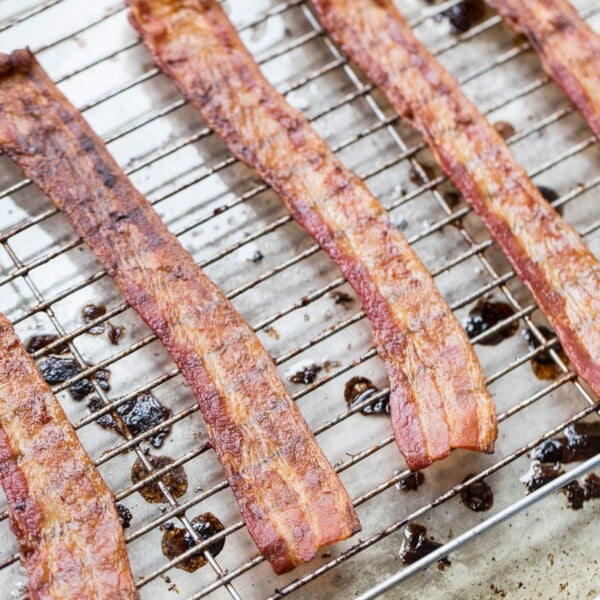
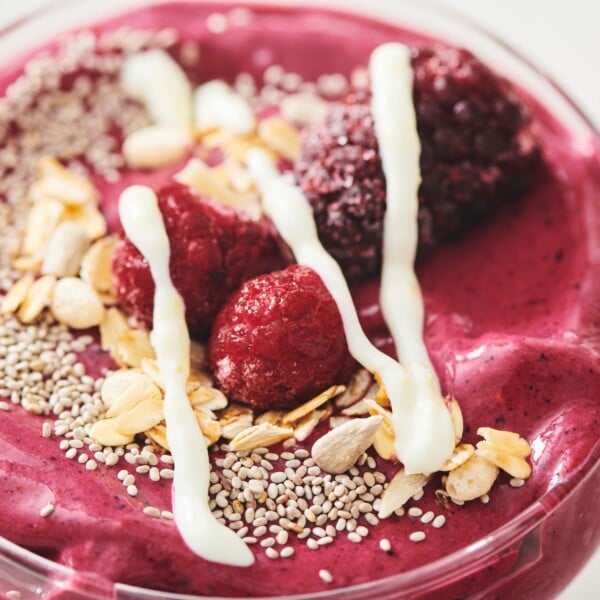
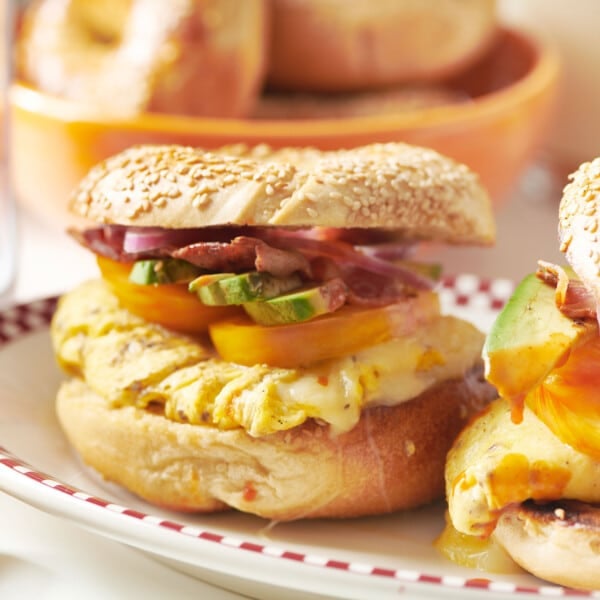


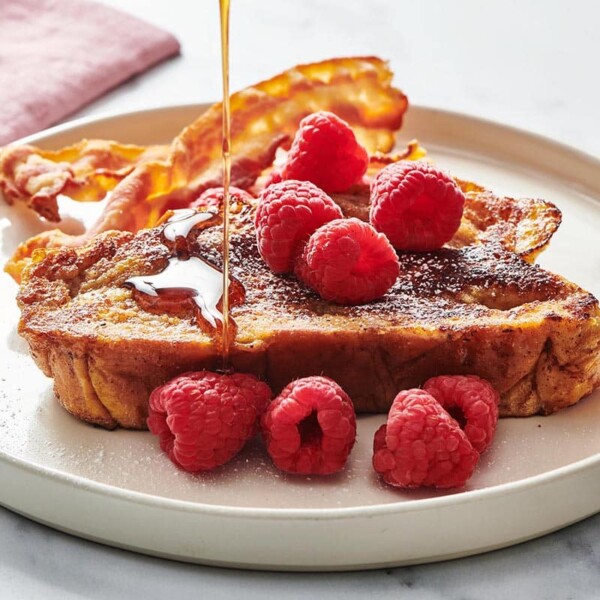









I’m defiantly not a chef. Learned by watch and some TV shows. I’m OK with the basics and frozen, canned and boxed foods are my speciality. I would rate myself 1-1/2 starts knowing I’m not a complete loss in the kitchen and not afraid to try something new. I’ve tried making omelets where the presentations were all disasters. I was thinking of getting an omelet pan, but realize it is too much work, but most likely spilling the cooking eggs etc. over everything. I have gotten some ideas from this article and will try something. In the past, my omelets end up making a burrito instead. The food still tasted good, although an eyesore for its presentations.